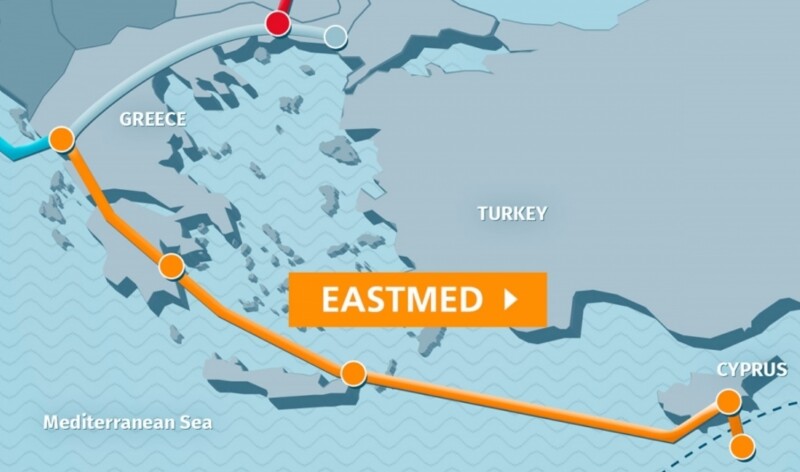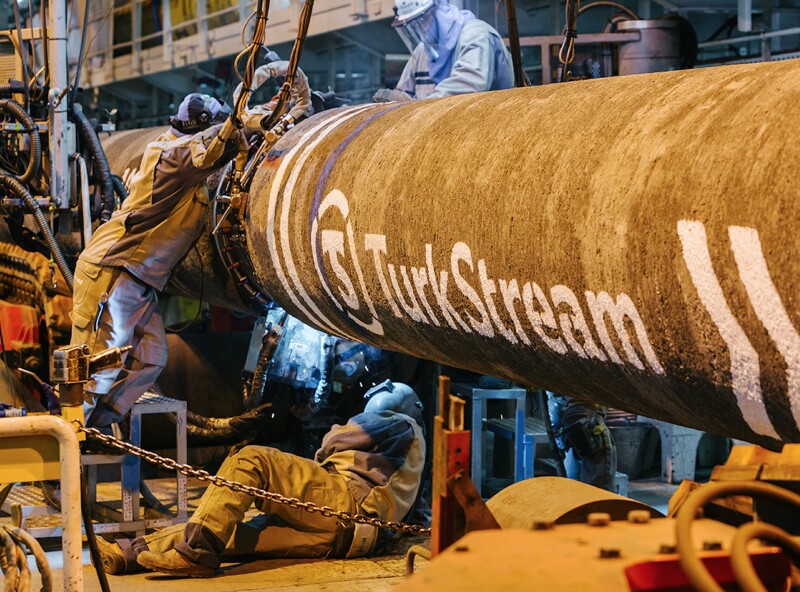There is no doubt that natural gas is on its way to grabbing the biggest share in the global energy mix in the nearest future as the world transitions away from oil and coal to cleaner energy.
But for Europe, how much gas is enough, and which of the tangled knot of pipelines being touted (or demonized) in the press is needed to keep civilization moving?
As 2020 drew to a close, the US reiterated its previously stated support for construction of the EastMed pipeline as envisioned in an intergovernmental agreement struck a year ago between Israel, Cyprus, and Greece.
The US did so while simultaneously tightening sanctions in the new year 2021 to block the nearly completed German-Russian Nord Stream 2 pipeline project, and the Russian-Turkish pipeline project in southern Europe, TurkStream, which has been supplying gas to customers for the past 12 months.
The move continues a longstanding US policy of seeking to break Europe’s reliance on Russian gas, which currently supplies 40% of the continent’s needs.
If built, the EastMed pipeline would carry 20 Bcm of Israeli gas a year, meeting10% of European demand, and with Italy likely to be the largest single gas purchaser. EastMed would be the world’s longest undersea pipeline, running for 1,900 km (1,180 miles) from Israeli and Cypriot offshore gas fields via Greece to Italy. (Ironically, Nord Stream is currently the world’s longest undersea pipeline.)

Backers anticipate making an investment decision in 2022 with the intention that the pipeline, if built, would start flowing in 2025, according to multiple press reports.
The Jerusalem Post reported that Greece wants to play an important role in the overall project. The US Energy Information Administration (IEA) reported that the US began exporting LNG to Greece in 2018 and the amount quadrupled the following year as Greece built up its gas infrastructure, including an 878-km (545-mile) pipeline.
The Trans Adriatic Pipeline (TAP), which brings Caspian gas to the Greek-Turkish border and into southern Italy, started commercial operation in late 2020. Greece also hopes to build a liquefied gas regasification unit off its Alexandropoulos port in the north that would be able to feed gas into TAP and another pipeline under construction with Bulgaria, The Jerusalem Post reported.
US LNG Exports Help but Not in the Long Term
Though US LNG exports are now part of Europe’s energy mix, Europe’s gas demands are rising, with the Oxford Institute for Energy Studies estimating that demand will outstrip LNG gas supply within 3 years.
Russia, however, does have bargaining power and, most importantly, its gas is already flowing through pipelines that actually exist. In January, as the promise of new sanctions loomed, Moscow moved swiftly to protect its southern flank with Gazprom announcing it had delivered gas via the TurkStream pipeline for the first time to Serbia and to Bosnia and Herzegovina.
TurkStream is a remake of the South Stream pipeline, which Russia cancelled in 2014 after Turkey shot down a Russian fighter jet during the Syrian conflict. In 2016, the two countries resurrected the project and proceeded with its development under an intergovernmental agreement and a new name.
Bulgaria, Greece, North Macedonia, and Romania have been receiving gas deliveries via Turkstream since it opened in January 2020, with two strings having a throughput capacity of 31.5 Bcm. One string delivers gas to Turkey, while the second string is intended for gas transit to southern and southeastern Europe through Turkish territory.
By the time US sanctions were implemented a year ago, Turkstream had already completed laying pipe under the Black Sea (November 2018) and constructing a receiving terminal near the Kiyikoy settlement in Turkey (2019). Sanctions were able only to target completion of some minor infrastructure that remained.
Nord Stream 2 though is a different matter. While it is true that the $11.6-billion project is 90% complete, the final 150-km stretch of pipeline left to be laid is in deepwater offshore Denmark where sanctions have already had a chilling effect: in early January, Norway’s DNV GL withdrew from the project, leaving Gazprom without a pipeline testing, inspection, and certification partner.
In mid-January, German media reported that the US announced sanctions against the Russian pipe-laying vessel Fortuna and that Bilfinger Engineering had become the first German company to quit the project.
Nord Stream 1 is currently the world’s longest undersea pipeline, running for 1224 km through the Baltic Sea from Vyborg, Russia, to the German coast. On-stream since 2012, its twin pipelines already supply 55 Bcm a year to Germany. Nord Stream 2 is designed to double that to 110 Bcm a year.
Russia has kept a brave face, insisting that, though the project will be delayed, it will be completed. The EU meanwhile is divided, with Germany, Austria, and the Netherlands embracing Nord Stream 2, while France and other countries arguing that it should be abandoned.
A wild card in all of this is whether the EU will tighten its own sanctions against Moscow over the jailing of Russian opposition leader Alexei Navalny. In early February, Brussels said such a move would be “premature.”


